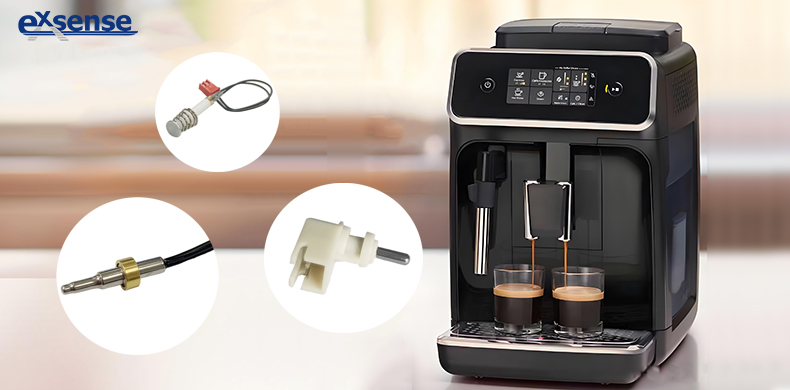The mainstream coffee machine market is currently divided into three major categories: capsule, semi-automatic, and fully automatic machines. Despite differences in working principles and structural designs, precise temperature control remains a critical factor in the core process of coffee extraction. As the key sensing component, NTC temperature sensors ensure the optimal extraction temperature range (92–96°C) through multi-dimensional monitoring and management. This prevents over-extraction from overheating (which causes bitterness) and under-extraction from low temperatures (which results in sourness).
Coffee bean roasting profiles are typically categorized into light, medium, and dark roasts. Each type demands significantly different water temperatures during extraction:
– Light Roast Beans: Being lightly roasted, these beans undergo minimal internal transformation. To fully release their bright acidity and unique aroma, the extraction temperature should be maintained at 90–95°C.
– Medium Roast Beans: With balanced sweetness, acidity, and caramelized notes, the ideal extraction temperature is 85–88°C to prevent over-extraction and flavor imbalance.
– Dark Roast Beans: Prolonged roasting enhances caramelization, emphasizing bold bitterness and richness. To avoid excessive bitterness, the extraction temperature should be controlled at 82–84°C, preserving the beans’ deep aroma.
Additionally, coffee bean varieties and personal taste preferences further influence extraction temperature requirements. Thus, the precision of a coffee machine’s temperature control module is essential. Below, we detail the system structure, application scenarios, and sensor selection criteria:
Ⅰ. Structure of the Coffee Machine Temperature Control System
The system comprises:
– Heating Module (e.g., heating plate): Controls water heating.
– Temperature Sensing Module (e.g., inlet/outlet sensors and heating plate sensors): Uses NTC sensors to accurately monitor the heating plate and water temperatures, preventing overheating that compromises flavor.
– Flow Control Module: Adjusts water flow rate.
– MCU Control Module: Processes temperature data from sensors and adjusts heating/cooling operations in real-time.
Ⅱ.Application Scenarios for NTC Temperature Sensors
In coffee machines, NTC sensors primarily monitor temperature changes at the water inlet and outlet and heating plate coil. While both serve temperature control, they perform distinct roles:
- Inlet/Outlet NTC Sensors:
– Installed near water channels to monitor real-time water temperature.
– Ensure extraction occurs within the optimal range (e.g., 92–96°C), maximizing flavor consistency.
- Heating Plate Coil NTC Sensors:
– Mounted beneath the heating coil to prevent overheating.
– Activate dry-boil protection during low water levels or power failures, enhancing safety and extending machine lifespan.
III. Recommended NTC Sensor Specifications
- Temperature Accuracy: ≥±0.3°C to eliminate flavor fluctuations caused by minor temperature deviations.
- Response Time: ≤0.3 seconds (e.g., EXSENSE products). Critical for high-speed extraction processes.
- Material: Stainless steel (304/316) encapsulation for waterproofing, corrosion resistance, and durability in high-temperature water flow. Customizable head dimensions ensure compatibility with diverse internal layouts.
Conclusion
As the core sensing component in coffee machine thermal management systems, NTC temperature sensors enable precise regulation of water temperatures within the 92–96°C gold extraction range. This ensures standardized, efficient extraction, delivering consistently rich, high-quality coffee and solidifying their role as indispensable enablers of professional-grade temperature control.

